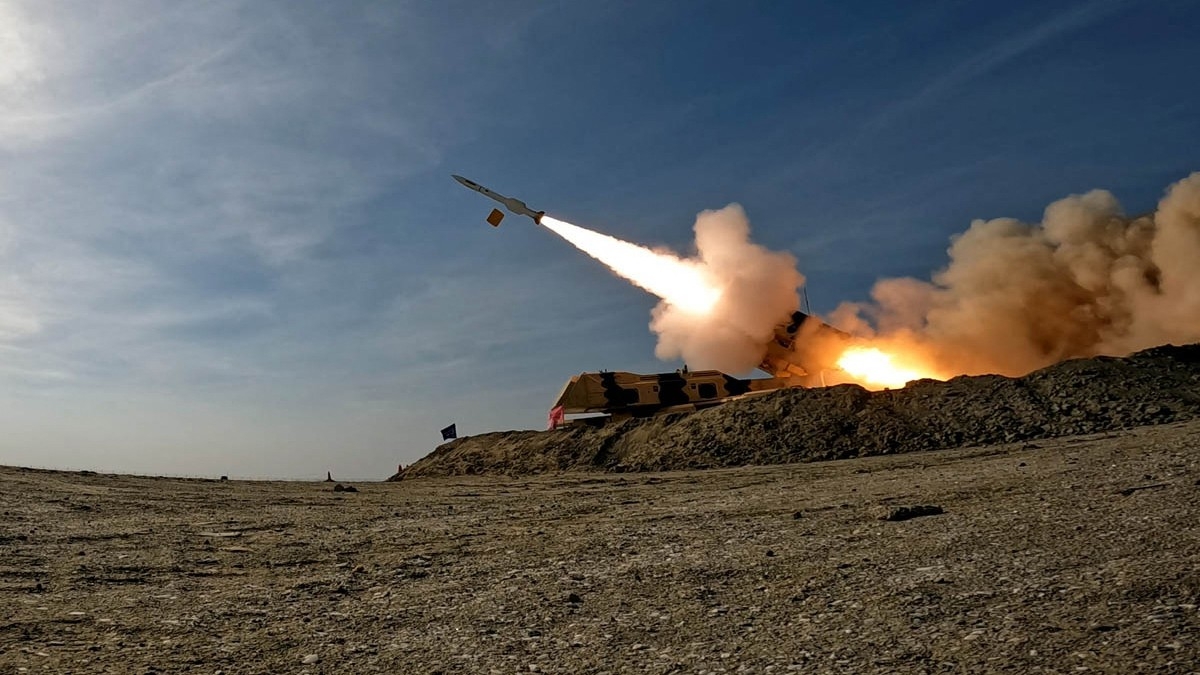Iran attack on Israel: What was shot down and by which country?
Tehran launched 170 drones, 30 cruise missiles and 120 ballistic missiles, with five countries sharing credit for successful interceptions

Iran launched a large-scale attack on Israel on Saturday night, firing more than 300 drones and missiles towards the country, most of which were intercepted.
It was Iran's first direct military assault on Israeli territory. The operation was conducted in response to Israeli strikes on the Iranian consular building in Syria earlier this month that killed seven of Iran's Islamic Revolutionary Guard Corps officers, including two senior commanders.
Iran informed Washington that its attacks against Israel would be "limited" and for self-defence, Foreign Minister Hossein Amirabdollahian said on Sunday.
Amirabdollahian said that Iran would "not hesitate" to protect itself against any "new aggression".
Middle East Eye takes a look at what we know so far about what projectiles were launched towards Israel on Saturday night, and which countries were involved in shooting them down.
According to Israeli military officials, around 170 drones, 30 cruise missiles and 120 ballistic missiles were fired towards Israel.
Officials said that while most were launched from Iran, some came from Iraq and Yemen.
Israeli military spokesperson Daniel Hagari said that 99 percent of aerial threats were intercepted.
None of the 170 drones reached Israeli territory, he said, while 25 of the 30 cruise missiles were shot down by Israel.
A small number of ballistic missiles got through Israel’s defences, hitting the Nevatim airbase in southern Israel. Hagari said it caused light structural damage to the facility, but that the base was still functioning.
A young Palestinian Bedouin girl was critically wounded when shrapnel from an intercepted ballistic missile hit her family home near Arad, in the southern Negev region.
"Except for her, as far as we know, there haven't been any other casualties," Hagari said.
The drones are most likely to have been Shahed loitering munitions, which carry around 20kg of explosives, according to US-based weapons expert Jeffrey Lewis.
While it is not yet clear which missiles were used on Saturday, Iran has several types of cruise missiles in its arsenal, including the Kh-55, an air-launched nuclear-capable missile with a range of up to 3,000km.
Tehran also possesses the Khalid Farzh, an advanced anti-ship missile that can carry 1,000kg of warheads with a range of 300km.
Fabian Hinz, a military analyst and researcher, wrote on X that the most likely cruise missile to have been used in the attack was the Paveh, which is part of the Soumar cruise missile family.
It has a range of 1,650km and is therefore capable of hitting Israel. Hinz noted that different versions of the Paveh have been sold by Iran to Yemen's Houthis and Iraq's Popular Mobilisation Forces.
Who intercepted the missiles?
Iran's drones and missiles were intercepted by Israel, the US, the UK, France and Jordan.
Videos on social media showed Israel's Arrow and Iron Dome systems thwarted the aerial threats.
The Arrow, developed in collaboration with the US, is a surface-to-surface missile system that operates outside the atmosphere to fend off long-range missiles. It aims to intercept missiles before they make their descent towards a target.
In November, Israel used the Arrow defence system to successfully intercept ballistic missiles launched by the Houthis in Yemen.
Israel also possesses David's Sling, which intercepts medium-range missiles.
The Iron Dome, which shoots down short-range missiles, has been used throughout the duration of the war to intercept rockets fired by Hamas and Lebanon's Hezbollah.
US officials said that more than 70 drones and three ballistic missiles were intercepted by its navy and military aircraft. It did not give specific details about which defence systems were used.
Officials told CNN that the navy shot down the ballistic missiles using the Aegis missile defence system aboard two guided-missiles destroyers in the eastern Mediterranean.
US forces also shot down Iranian drones above Syria's Sweida and Deraa southern provinces, near Jordan's border, security sources told Reuters.
"To support the defence of Israel, the US military moved aircraft and ballistic missile defence destroyers to the region over the course of the past week," US President Joe Biden said in a statement.
"Thanks to these deployments and the extraordinary skill of our service members, we helped Israel take down nearly all of the incoming drones and missiles."
British Prime Minister Rishi Sunak confirmed on Sunday that the Royal Air Force (RAF) shot down "a number of Iranian attack drones". He added that the RAF had sent additional planes to the region.
Israeli officials said France was also involved in blocking the Iranian attack.
"France has very good technology, jets, radar - and I know they were contributing in patrolling airspace," Hagari said, giving no further detail on French involvement.
Jordan also took part in intercepting Iranian missiles, according to security sources cited by Reuters. Sources said the missiles were intercepted near the Jordan Valley and along the Jordan-Syria border.
"Some shrapnel fell in multiple places during that time without causing any significant damage or any injuries to citizens," a statement from Jordan's cabinet read.
https://www.middleeasteye.net/news/iran-attack-israel-what-was-shot-down-who-us-uk-jordan-france



0 Comments:
Post a Comment
Subscribe to Post Comments [Atom]
<< Home